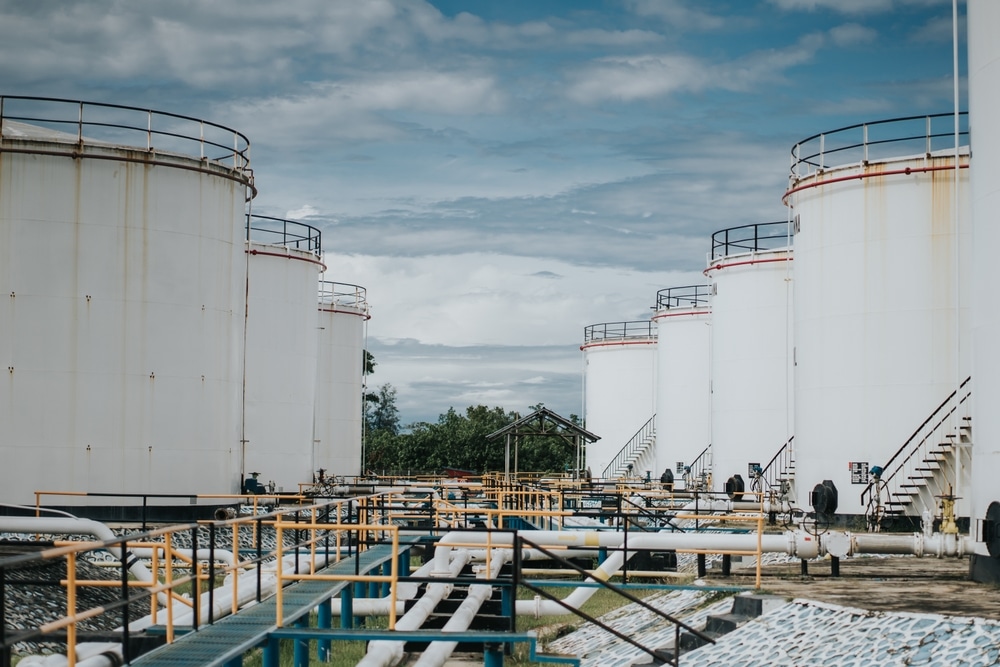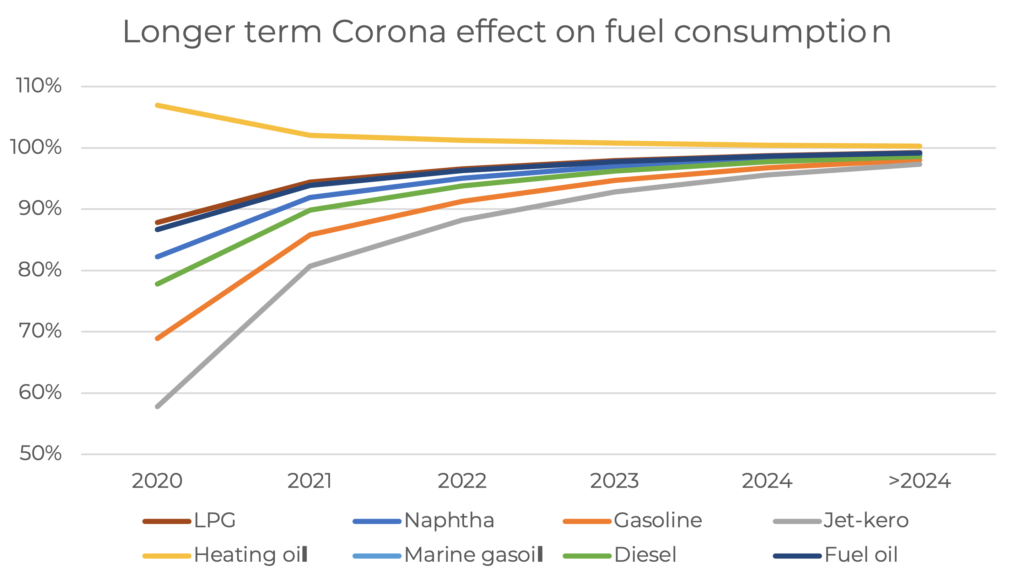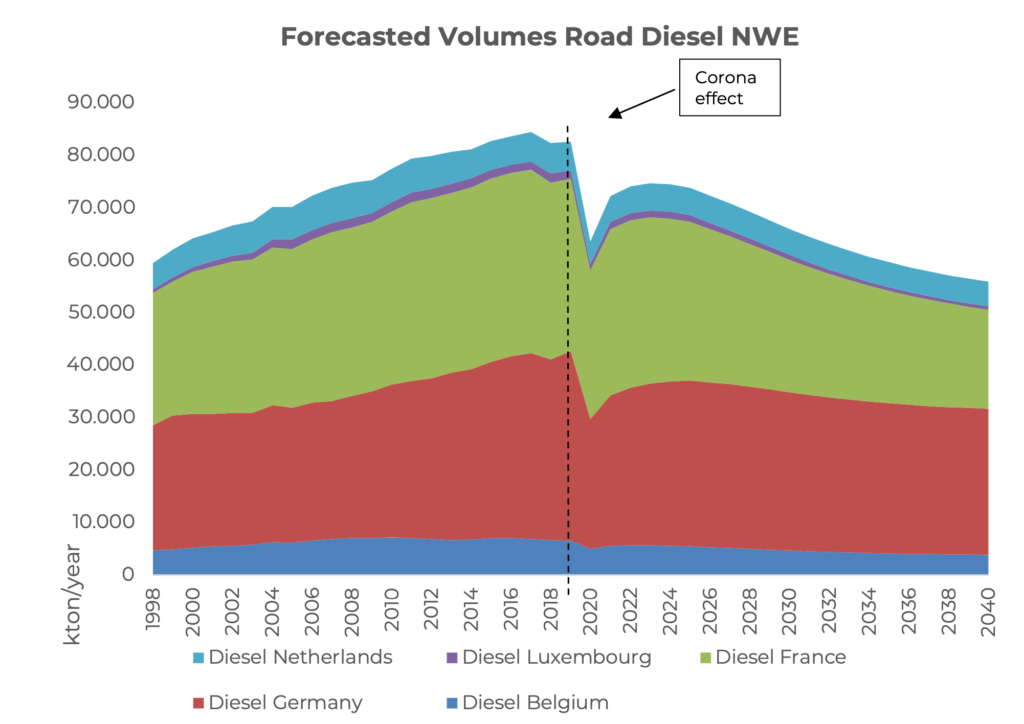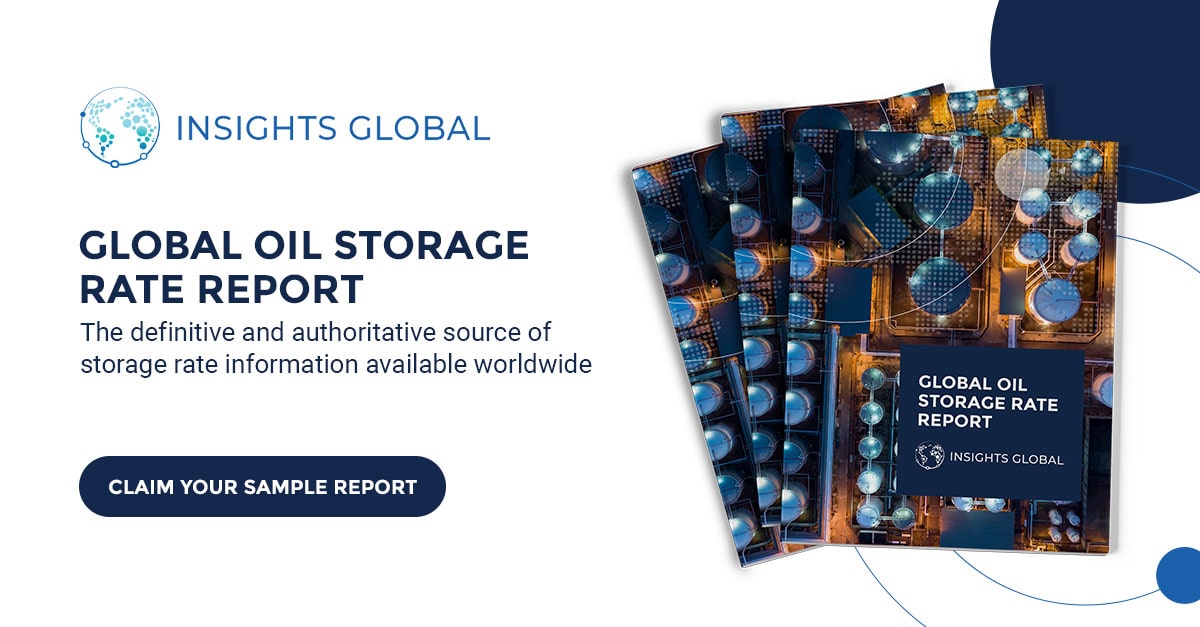By Lars van Wageningen, Research & Consultancy Manager
May 2025 was marked by significant volatility in global oil markets, with Brent crude prices flirting with multi-year lows, forward curves flattening into contango, and trade flow disruptions affecting key hubs. While backwardation still defines the prompt structure, a deeper contango emerges beyond Q4 2025—a signal of shifting market fundamentals. For tank terminal operators, this environment demands strategic recalibration toward future storage plays, flexible infrastructure, and adaptive commercial models.
1. Price Weakness and Forward Curve Flattening
Brent crude hovered between $62.13 and $64.53/bbl throughout May, pressured by ongoing geopolitical uncertainty, OPEC+ supply increases, and a fragile macroeconomic outlook. On May 2, Brent dropped below $60/bbl, the lowest in four years, before modest rebounds later in the month.
Key trend: While spot prices stayed depressed, forward spreads gradually narrowed, and by mid May, Brent calendar spreads showed contango developing from 2026 onwards
Strategic takeaway: Terminal professionals should prepare for a shift from prompt-driven demand to future-oriented storage inquiries. This is a critical time to reassess contract structures and evaluate potential tank reconfiguration to align with longer-dated storage demand.
2. Storage Economics Still Underwater—But Signs of a Turn
Despite forward-looking contango, break-even storage rates remained negative across all products in May, especially gasoline and gasoil:
- RBOB M1-M6: ranged from -€9.33 to -€10.07
- Gasoil M1-M6: ranged from -€3.09 to -€3.52
- Jet kerosene M1-M6: consistently around -€3.70 to -€3.91
The charts on page 3 across all reports confirm persistently unprofitable contango storage throughout May, despite some improvement in longer-term spreads.
Strategic takeaway: Tank terminals should remain focused on throughput services while preparing operationally for a potential contango play in 2026. Scenario planning for price curve shifts is no longer optional—it is essential.
3. Product Cracks Reveal Divergent Market Dynamics
Product crack spreads throughout May were a mixed bag:
- Gasoline and HSFO saw support from tighting of the market due to export opportunities (gasoline) and and slowdown in imports (HSFO).
- Middle distillates like diesel and jet fuel showed bearish tendencies as imports into Europe increased, but this can get under pressure due to a closed arb and slowdown in imports for June.
- Cracking margins hovered between $8.03 and $11.62/bbl, with hydroskimming margins remaining negative throughout
According to page 9 commentary in the May 16 and May 30 reports, light ends benefitted from ARA exports to the US and Africa, while middle distillates suffered from inventory overhangs and closed arbs from Asia.
Strategic takeaway: As margins vary across the barrel, tank terminals must enhance product flexibility—supporting blending, switching, and short-term repurposing between distillates and gasoline pools.
4. Emerging Trade Flow Shifts and Demand Signals
May trade flow insights reveal significant structural adjustments:
- Fuel oil: Increased regional demand for ULSFO in the Med and summer power generation demand in the Middle East and Egypt supported prices, yet arbs to Asia remained shut due to high transport costs and saturated markets.
- Middle distillates: US distillate stocks rebounded but remain low, closing some export opportunities to Europe, while demand up the Rhine remained steady. Europe continued importing from Middle East and India to compensate for local refinery outages.
- Gasoline: Export routes from ARA to North America and West Africa remained active, although at lower levels compared to previous years. Stocks in ARA dropped in early May but rebounded due to incoming cargoes and refining restarts.
Strategic takeaway: Trade imbalances are increasingly regional and seasonal, making it vital for tank terminals to adopt flexible scheduling and logistics management systems to match product flow shifts.
5. Market Sentiment Turning, but Not Yet Translated to Tank Economics
Forward curve outlooks across May consistently echoed a growing belief in storage demand growth from 2026. Spot backwardation remained intact but eroded slightly week-over-week.
- The May 30 outlook noted the market was absorbing a 2.2mbpd surplus for now, but anticipated stock builds may trigger deeper contango later.
- Calendar Spread Options (CSOs) for WTI crude Nov/Dec 2025 surged to $1.60–$2.00/cbm, reflecting early hedging and speculative positioning.
Strategic takeaway: Commercial teams at tank terminals must start engaging counterparties today for forward storage deals, especially with counterparties active in the CSO and futures market.
Conclusion: Ready for the Pivot
While the storage economics of May 2025 remain unfavorable, contango is creeping back—not yet at the front end, but visibly on the horizon. For tank terminals, this is the moment to:
- Invest in future-proofing infrastructure
- Increase contractual agility
- Prioritize data-driven positioning strategies
The market is poised to pivot. Terminals that act on early signals—rather than waiting for headlines—will own the advantage in the next cycle.






